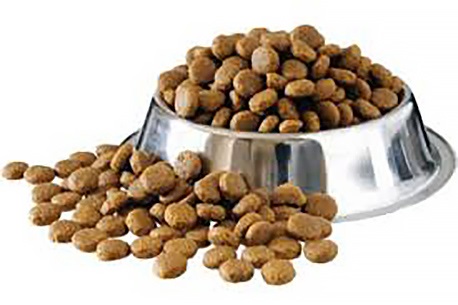By Heidi Clayton
The internet offers no shortage of advice on what diet is best to feed your dog. Between homemade, fresh, raw, or kibble, the options seem endless. This week, I will focus on feeding kibble.
Feeding kibble became mainstream roughly around the time of World War II when the price of meat soared and a cheaper option was needed to feed the family dog. Industrialization and the loss of family run farms led to kibble becoming a cheap and easy way to feed the dog. The benefits of feeding kibble for most people is the ease of buying a bag of food that stores well. Feeding kibble can also be the most cost effective with a variety of low budget options available. There has also been a virtual explosion of kibble options available in the past few years. There is wide range of formulas from breed specific, adult maintenance, puppy, limited ingredient, grain free, to raw coated. Protein sources vary from beef, to chicken, and even kangaroo.
The downsides of feeding kibble can include that most are carbohydrate heavy with little to no moisture and can have more fillers than proteins. Fillers such as grains, peas, legumes, and potatoes can be the cause of skin allergies or stomach issues. Also you must trust that the companies making kibble are actually following quality control methods and are producing a food that consists of what is actually printed on the bag.
When picking a kibble consider your individual dog’s needs such as their activity level and health concerns such as sensitive stomachs, allergies, or kidney issues. I have found that the amount of peas, legumes, and potatoes in most kibbles give my dogs a skin “funk,” so I avoid feeding foods that contain those ingredients. My 13-year-old girl recently decided to dine on a dead rancid snake that landed her in the hospital with gastritis for several days. Richer foods now upset her stomach so she gets a mix of a hydrolyzed protein kibble and a raw meat diet. Bottom line is that there is no one perfect diet, every dog has different nutritional needs.
In 2018 the FDA released a statement that feeding grain-free kibble caused dilate cardiomyopathy in dogs. The statement caused widespread panic in owners that feed grain free kibble and a backlash from companies that produce them. Since then there have been actual science based studies that show that as of now, there is no proof that feeding grain free diets causes cardio myopathy in dogs. If your dog has skin issues due to grains in kibble and actually needs to eat grain free, don’t panic; it is safe to do so and it does not mean your dog will get cardio myopathy. For more information on the grain free food scare visit thesciencedog.com. Canine nutritionist Linda Case wrote excellent articles on the studies conducted that debunk grain free foods causing cardio myopathy.
TheWholeDogJournal.com is another helpful source of information that maintains a yearly “best of” list for each diet available for dogs. They review dozens of kibble brands yearly as well as having many other helpful nutrition articles. Locally run businesses that offer a wealth of knowledge are The Animal House in Ocean City and English Creek Pet Supply in EHT. Shani and Liz at Animal House and John of English Creek know their products extensively and are always available to help you pick the best food for your dog. And always consult with your veterinarian to talk about your dog’s specific needs.
Heidi Clayton started Four On the Floor Dog Training to provide positive, reward-based dog training in South Jersey. She breeds, trains and shows bull terriers under the SoraBully’s Bull Terriers kennel name. Email questions to heidi@fouronthefloordogtraining.net or learn more at https://fouronthefloordogtraining.net






